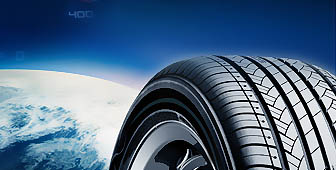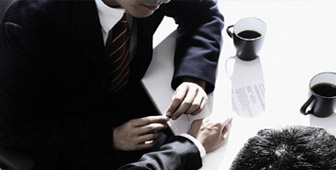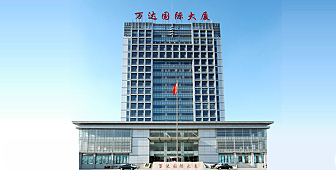1. SCOPE
The basic requirement of the transport, storage, assembly and disassembly, pressure, load maintenance of tyres are stipulated in this regulation.
This regulation is suitable for all kinds of tyre products of BOTO tyre.
2. TRANSPORT OF TYRE
l Tyre must be placed vertically when they are transported (tube tyre should be inflated slightly), and it is not allowed to place tyres together with oil, inflammable objects and other chemical objects, and the tyre should be kept from direct sunlight or rain.
l When the tube is not packed separately, it should be placed in the tyre and inflated slightly in order to keep touch with the internal edge of tyre and tie by rope more than two places.
l Do not dismantle bead protection device and steel belt to avoid any injury to bead when transporting wrapped tubeless tyre.
l It is not allowed to hang the tyre directly by rope, tackle. The non-metal broad ribbon is permitted.
l When using fork lift to handle a tyre, use fork to lift up the tyre from its side, do not lift it up by inserting the fork into bead central hole.
3. STORAGE OF TYRE
l Tyres should be stored in good condition of air warehouse and kept from direct sunlight. The temperature in the warehouse should be controlled between 10Ōäā~30Ōäā and the relative humidity should be between 50% and 80%.
l The warehouse should be 1 meter from hear source, generating equipment and other ozone-generating place.
l It is not allowed to place tyres together with oils, inflammable objects and chemical objects.
l To store the internal tubes and hung on half-circular shelves and the tyres should be changed regularly the surface of the internal tubes and hung on half-circular shelves and the tyres should be changed regularly the pivot, at least once two months. It is no allowed to fold and pile them. To store the flaps specifically, it should be placed on circuital wooden shelves.
l Tyres should be stored in lots according to production date or store date, first in and first out. Meanwhile, they should have store card to record the type, specification, structure, ply rating, production date and store date.
l Wrapped tyres should be stored with packages.
4. ASSEMBLING AND DISASSEMBLING OF TYRE
l Tyres should be fixed on corresponding rims of stipulating in regulation.
l The same axle should be assembled with tyres of the same specifications, structure, size, ply rating and patterns.
l When fitting tyres which have specified running direction, the running direction should be the same with the running direction to wheel.
l All tyres of vehicles or the same axle should be replaced when replacing with new ones.
l When assembling or disassembling the rube tyres it should use the special tools.
l When tubes are placed into tyres the dirt should be cleaned from the internal of the tyres and tye surface of tube and apply some powder on the surface of the internal tube for their extent. The position of internal tube valve and rim valves should be kept together.
l Assembly and disassembly to tubeless tyres.
1.- Before amount tyres rim should be checked firstly for changing figure and crack. If there are some problems rim should be repaired or replaced. The rust and other things should be cleaned from the surface of rim and tyres base and “O” circle groove before amounting tyres.
2.- When dismantling or installing tyres with O-ring rims, need to make replacement with new O-ring. Before installing tyres, check if O-ring have defects and smear lubricant.
3.- The bead disassembly machine and the tyre assembly device should be used before mount or dismount tyres. It is not allowed to jimmy and pound forcefully in order to avoiding damage the seal layer in tyre and bead. For the convenience of bead and the rim. It is not allowed to use any antifriction that can influence the quality of tyres.
l Table of two tyres outside diameter permitted difference value range when off-the road twin tyres are installed side by side.
5. LOAD OF TYRE
l The load of tyres should be suit with the current national standard.
l The goods loaded by vehicle should be placed equably in order to avoid one tyre takes too much load.
6. USING PRESSURE OF TYRE
l The using pressure of tyre should be suit with the current national standard.
l After mounting tyres tubes should be inflated slightly firstly to make sure it can extend then kept inflating till the pressure meets the regulation.
l It is necessary to inspect if there is a leakage in the place of the valve pad and the valve rim touching with tyre after inflating the tyre.
l Check air pressure at fixed time every day, when finding air pressure reduction, add to standard air pressure in time.
7. THE USAGE OF TYRE
l The vehicle should be avoided violent acceleration and emergent brake to prevent from the damage of tyres.
l If the vehicle is operated at high-speed for long distance or in summer it is necessary to check the regularly and increase the stop times.
l If the tyre needs inflating it must be done after decreasing the temperature of tyre.
l If the tyre becomes hot and the internal pressure is increasing the vehicle should be stopped for releasing warm but not be emitted pressure and not be sprinkled cool water on it.
l When chain up tyres both sides should be chained. Take it off if chains are not necessary.
l As soon as you find a radial tyre pierced you should take it off from vehicle to repair so as to prevent moisture getting into carcass eroding steel cord and resulting in separation.
l Radial tyres must strictly keep standard inflation pressure. Because of the reason of their structure their subside level and contacting surface are bigger.
8. MAINTENANCE OF TYRE
l Tyres should be made first class maintenance with the vehicle. The main missions are to check inflation, wear of tyre surface and clean the stone and dirt and from the groove of pattern. To check if the tyre is mounted well and if the rim, fender circle and lock riing are well.
l Tyre should be made second-class maintenance with the vehicle. If the outside tyres have outside damages, decortications or bulges.
l The tyres should be rotated regularly as per appendix A. When running 1200 km~1500 km the rotation should be made and balancing the tyres.
9. REPAIR TYRE
l The tyres should often be checked. As soon as the damage are found, they must be repaired immediately.
l The tyres should be stopped using when the tyres wear to wear mark.
l The retreaded tyres should not be used as steering tyre in order for security of the vehicle.
l Pay more attention to the protection of tyres, remove rust form tyres’ rim and smear antirust paint at regular intervals.





